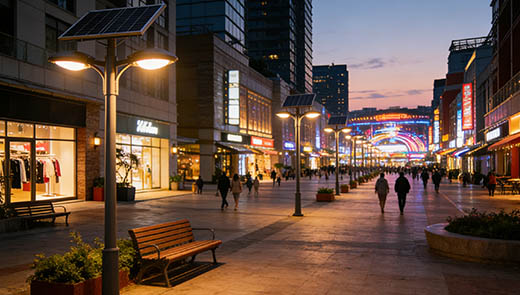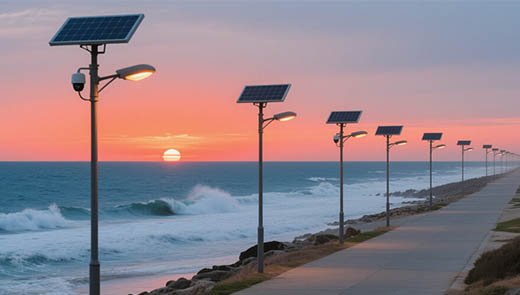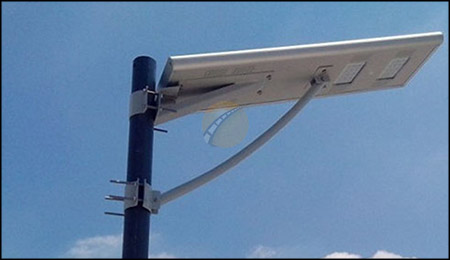How to Optimize Street Light Placement for Maximum Efficiency
In urban construction and management, optimizing street light layout is of paramount importance. A well-designed street light layout not only enhances the safety of pedestrians and vehicles during nighttime travel but also effectively promotes the development of nighttime economic activities. Especially for solar-powered LED street lights, through scientific layout and advanced technological applications, they can ensure lighting effectiveness while achieving efficient energy utilization and sustainable environmental development. This article will explore in depth how to optimize the layout of solar-powered LED street lights from multiple dimensions to achieve maximum efficiency.
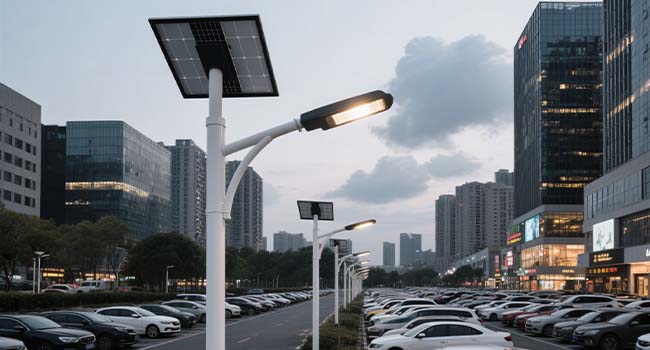
Understanding the Basics of Street Lighting
Purpose of Street Lighting
The core purpose of street lighting is to enhance the visibility of pedestrians and drivers at night. In dark environments, bright street lights can clearly outline road contours and identify obstacles, significantly reducing the likelihood of traffic accidents. Additionally, a well-lit environment is crucial for public safety, effectively deterring criminal activities and providing residents and visitors with a sense of security during nighttime outings. Furthermore, well-lit neighborhoods can stimulate the prosperity of nighttime economic activities such as night markets and convenience stores, adding vitality to the city.
Key Factors in Placement
Street light layout requires consideration of multiple factors. Traffic density is one of the key factors. Areas with high vehicle and pedestrian traffic require higher brightness and broader coverage from street lights; pedestrian path planning determines the areas that need to be prioritized for illumination; public gathering areas, such as squares and parks, require more uniform and adequate lighting; and existing infrastructure, including underground utilities and utility pole locations, also influences the installation location and method of street lights. Only through proper planning can lighting be evenly distributed, avoiding over-illumination in some areas while others remain inadequately lit, while also aligning with the city's overall planning to enhance its aesthetic appeal and functionality.
How to Properly Position Solar LED Street Lights for Maximum Efficiency
Assess Sunlight Availability
Solar LED street lights rely on solar panels to convert sunlight into electricity, so the lighting conditions of the installation area directly impact their operational efficiency. Before installation, it is essential to thoroughly inspect the area for any obstacles that may block sunlight, such as tall buildings or dense trees. Shadows cast by these obstacles during the day can hinder solar panels from receiving sunlight, leading to insufficient battery charging and consequently affecting the duration and brightness of nighttime lighting. Only by ensuring that solar panels receive adequate and direct sunlight throughout the day can the stable operation of street lights be guaranteed.
Consider the Street Orientation
The orientation of the street significantly impacts the duration and intensity of sunlight received by solar street lights. Theoretically, east-west oriented streets are most advantageous for solar street lights to receive sunlight, as the solar panels can face the sun directly for a longer period during the day, absorbing more solar energy. However, in actual installations, not all streets are east-west oriented. When installing street lights on streets with other orientations, the angle of the solar panels can be adjusted to maximize sunlight exposure, or the area of the solar panels can be increased to compensate for insufficient sunlight duration.
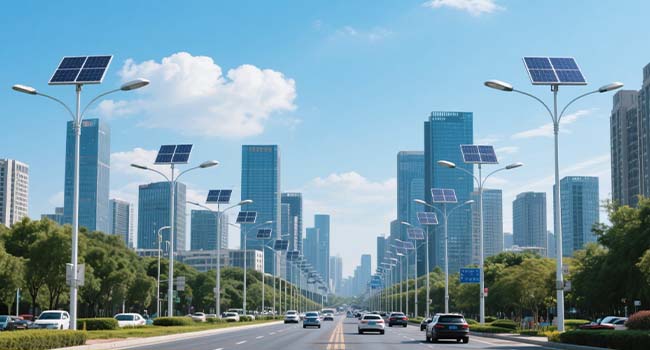
Opt for Proper Mounting Heights
Installation height is closely related to lighting effectiveness. If solar led street lights are installed too high, light will scatter in all directions, reducing ground illumination intensity, and pedestrians or vehicles on the road may still feel insufficient lighting; If installed too low, while ground brightness increases, the lighting coverage area decreases, failing to meet the lighting needs of large-area roads. Generally, the recommended installation height for solar LED street lights is between 15 and 20 feet, with specific heights adjusted based on the actual size of the lighting area and required light intensity.
|
Mounting Height (ft) |
Lighting Characteristics |
Suitable Scenarios |
|
Below 15 |
High ground brightness, but limited coverage area |
Small plazas, alleys |
|
15–20 |
Balanced brightness and coverage |
Urban main roads, regular streets |
|
Above 20 |
Wide coverage area, but lower ground brightness |
Highways, large open areas |
Ensure Even Spacing
Even spacing between street lights is key to achieving uniform lighting. Before installation, it is necessary to accurately measure the length of the area to be illuminated and calculate the appropriate spacing based on the lighting radius of the street lights. For example, if a particular street light has an effective illumination radius of 20 meters, the spacing between adjacent street lights can be set to 35–40 meters (taking into account light overlap and attenuation) to achieve uniform illumination without blind spots. By setting reasonable spacing, not only can the uniformity of road lighting be ensured, but the overall aesthetic appeal of the installation can also be enhanced.
Consider Surrounding Environment
Environmental factors surrounding the solar LED street lights significantly impact their performance. Nearby light sources may interfere with the street lights' illumination, causing light overlap or shadows; reflective surfaces, such as smooth billboards or glass facades, may reflect light, causing glare that affects pedestrians' vision and the normal operation of the street lights; In areas with high traffic volume, higher requirements are placed on lighting stability and brightness. Therefore, during installation, it is advisable to avoid installing street lights in such unfavorable environments whenever possible, or to implement corresponding protective and adjustment measures.
Solar Street Light Technology Integration
Adaptive Lighting Technology
Adaptive lighting technology is a key means of enhancing street light efficiency. By integrating sensors and intelligent dimming systems, solar poewr street lights can automatically adjust brightness based on the actual presence of pedestrians and vehicles. During nighttime periods with fewer pedestrians and vehicles, street lights automatically reduce brightness to minimize energy consumption; when pedestrians or vehicles pass by, the lights quickly return to normal brightness to ensure safety. This technology not only significantly reduces energy consumption but also effectively minimizes light pollution, making it an ideal choice for sustainable urban development.
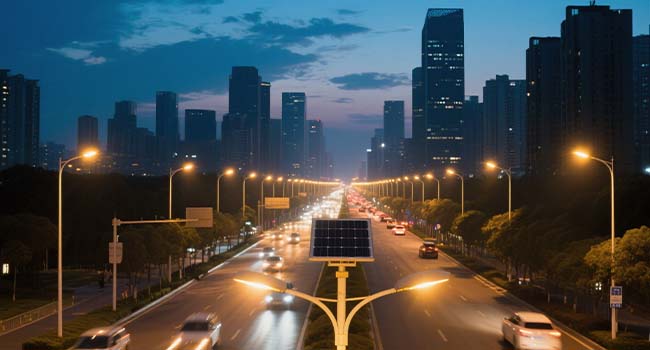
LED Advancements
LED technology, with its significant advantages, has become the preferred choice for modern street lighting. Compared to traditional light sources, LED lights have a longer lifespan, significantly reducing maintenance costs; they consume less energy, saving a substantial amount of electrical resources; additionally, LED lights offer higher brightness and better color reproduction, providing clearer and more realistic lighting effects. Furthermore, the rapid on/off characteristics of LED lights make them highly compatible with smart devices such as motion sensors, further enhancing the intelligence and efficiency of street light systems.
|
Technology Type |
Lifespan (hours) |
Energy Consumption (per lamp) |
Maintenance Frequency |
Lighting Performance |
|
Traditional Light |
1,000–5,000 |
60–100 watts |
Frequent replacements |
Moderate brightness, poor color rendering |
|
LED Light |
50,000–100,000 |
15–30 watts |
Low, nearly maintenance-free |
High brightness, good color rendering |
Environmental Considerations
Reduced Carbon Footprints
One of the major advantages of solar street lights is their ability to effectively reduce carbon emissions. In today's rapidly industrializing world, traditional street lights rely on fossil fuels such as coal and natural gas for power generation, with each kilowatt-hour of electricity produced generating an average of approximately 0.785 kilograms of carbon dioxide. The vast network of street lights in cities operates continuously, and over time, the resulting greenhouse gas emissions are significant, not only exacerbating global warming but also triggering a chain reaction of extreme weather events.
Solar street lights utilize the photovoltaic effect to convert renewable solar energy into electricity. Throughout the entire process—from light absorption, energy storage, to illumination—they produce virtually no carbon emissions. Take a city district equipped with 500 solar street lights as an example: it can reduce carbon dioxide emissions by approximately 180 tons annually, equivalent to the carbon sequestration capacity of nearly 10,000 mature trees, making it an unquestionably eco-friendly lighting solution.
Energy Conservation
Solar street lights absorb sunlight during the day through solar panels and store electrical energy for nighttime lighting use. This unique operational model significantly reduces reliance on grid power. In today's increasingly energy-constrained environment, the application of solar street lights helps alleviate grid pressure, promotes sustainable energy utilization, and contributes to the development of a resource-conserving society.
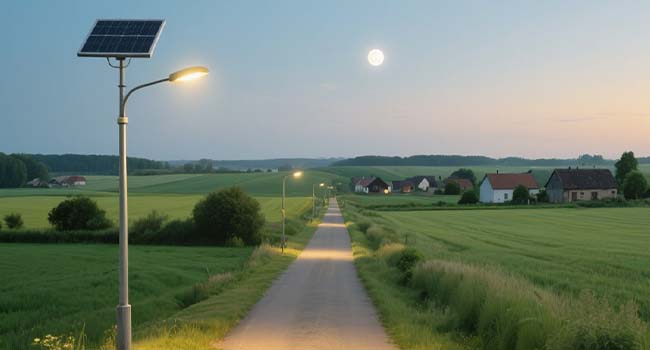
Solar Street Light Implementation Challenges and Solutions
Dealing with Existing Infrastructure
When upgrading existing street light systems, numerous challenges often arise. For example, old wiring may be outdated and unable to meet the power requirements of new street lights; the original pole locations and heights may not align with new layout requirements. In such cases, priority should be given to upgrading areas with the poorest lighting conditions and highest accident rates. Simultaneously, a comprehensive assessment of existing wiring and fixtures should be conducted to determine whether a full replacement or partial upgrade is necessary, thereby maximizing cost-effectiveness.
Budget Constraints
Large-scale street light renovation and installation projects typically require significant financial investment, and funding shortages are a common issue. To address this challenge, it is advisable to actively explore diversified funding sources. Government agencies often provide subsidies for energy-saving renovations, which businesses can apply for to reduce project costs; additionally, opportunities for public-private partnerships can be sought to involve social capital in project development; furthermore, the long-term cost-saving advantages of energy-efficient upgrades can be leveraged to secure loan support from financial institutions, ensuring the smooth progression of the project.
The optimal layout of solar LED street lights is a systematic project, involving basic principles, actual installation, technical application, cost control, etc. By scientifically and rationally selecting the installation location, determining the height and planning the spacing, actively applying advanced adaptive lighting technology and LED technology, effectively solving various challenges in the implementation process, achieving the optimal layout of street lights, and creating an efficient, energy-saving, and environmentally friendly urban lighting system.

